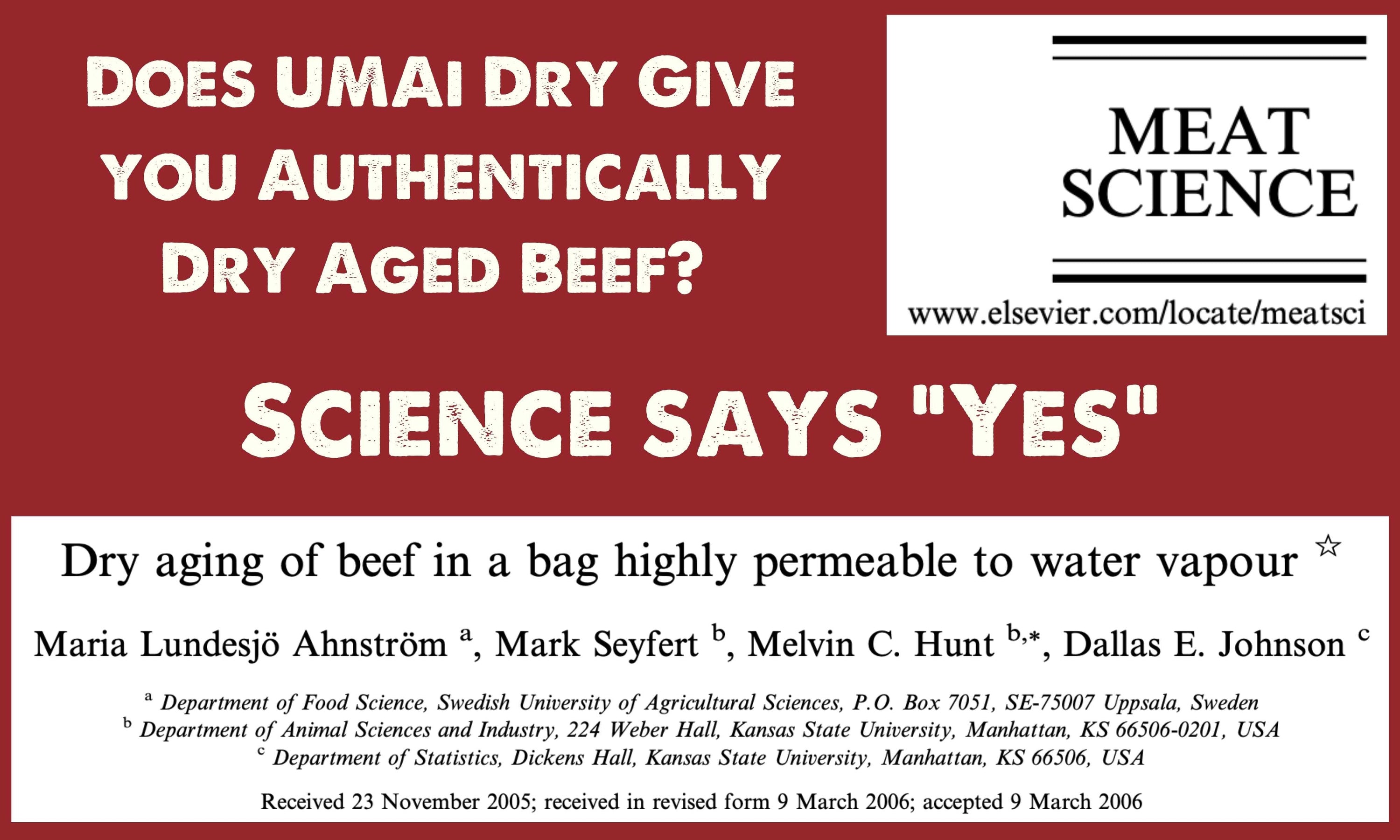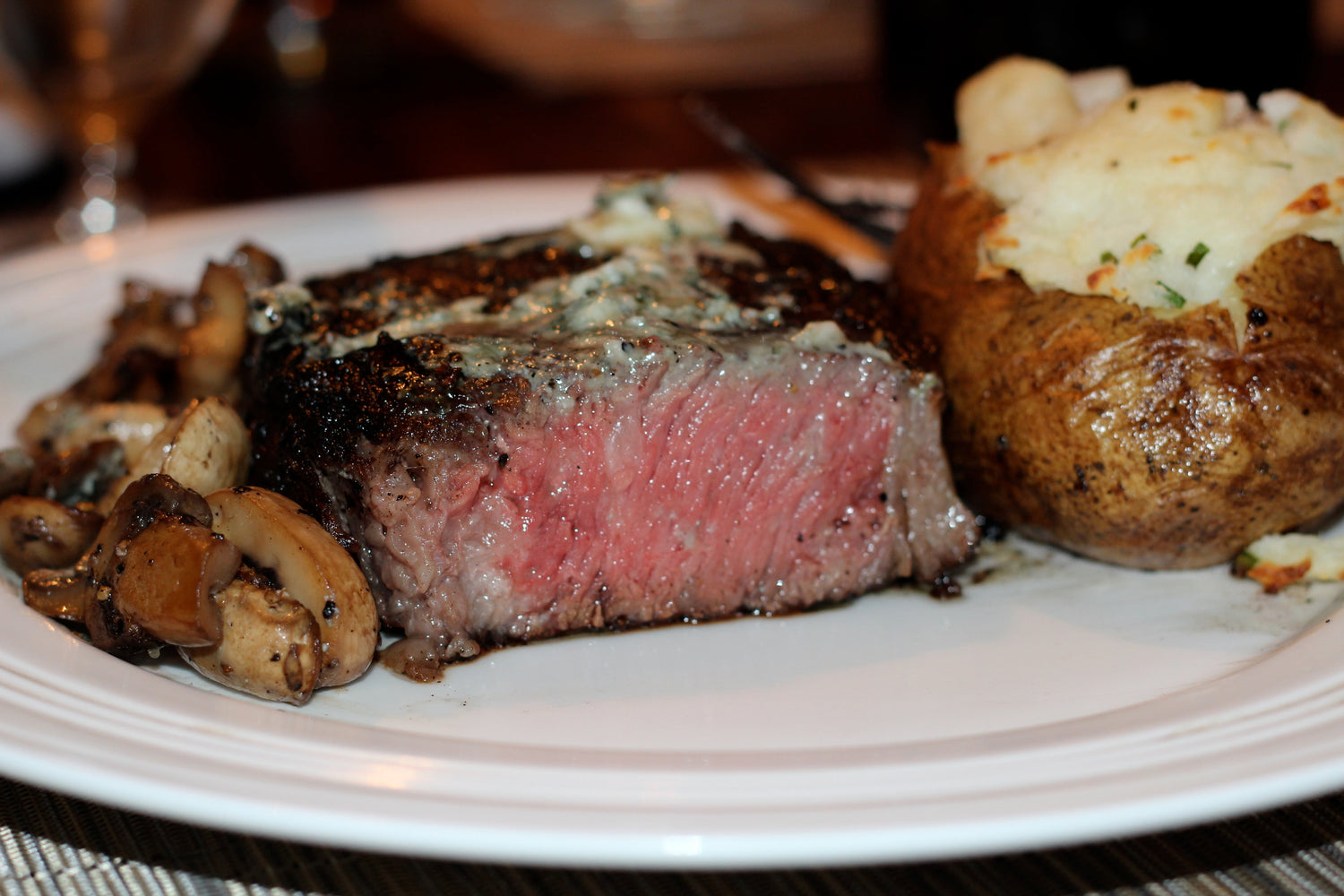Meat crafters love to debate how to achieve that magical umami funk of genuinely dry aged beef. This was the question to to scientists back when UMAi Dry® was under development back in 2005.
The Department of Meat Science at Kansas State University has long had a reputation in setting up state-of-the-art commercial dry aging facilities for large meat processors. These extremely capital intensive rooms are designed specifically for creating traditional dry aged results in the safest conditions. These are refrigerated rooms carefully humidity managed for optimal moisture levels at different points in the aging process. They employ intense UV lighting to inhibit mold growth, and have very strict protocols limiting access. All the meat that is to be aged must to started at once, and completed at the same time. This "all in, all out" requirement makes inventory control extremely difficult.
When we asked them to help us explore this potential use for a moisture and oxygen permeable membrane approved for food contact in the EU, they laughed. "Dry meat in a plastic bag? You have got to be kidding!" In the end, scientists all love a good experiment, so they humored us and ran a side-by-side test with open air aging meat in one of these very special dry aging facilities.
Immediately within the first two to three weeks of aging, they were astounded that the meat darkened and firmed up, drying at the same rate at the open air meat.
Later, they were amazed that surface bacterial analyses comparing the Traditional and "Bag" dry aged examples showed big differences. Unsurprisingly, the membrane-protected dry aged meat showed almost no aerobic (oxygen-thriving) bacterial activity, and minimal anaerobic (oxygen deprived, or vacuum packaged) bacterial growth. Overall, the surface of the traditionally open air aged meat had a much higher bacterial load (higher count) than the combined aerobic and anaerobic count on the UMAi Dry protected meat.
In other words, the membrane prevented the surface contamination that is inevitable on the surface of raw meat even in the most controlled conditions. More important to the authenticity, the membrane really did allow oxygen exchange to support both the classic nutty flavor development and the activity of the tenderizing enzymes that make dry aged steak butter knife tender.
Now for the part we are all waiting for: How did the dry aged steak taste??
When the results of two separate studies were published in Meat Science, the official journal of the American Meat Science Association, the scientists we mo longer laughing.
The 2006 research by Seyfert comparing "Dry-aged" and "Bag dry-aged" striploin steaks, the taste panel participants were asked three questions:
- Which sample do you like more?
- Which sample do you consider to be more tender?
- which sample do you consider to be juicier?
Here were the results:
| Overall liking Tenderness Juiciness
"Dry-aged" 80 75 81 "Bag dry-aged" 71 74 67 No difference 4 6 7 |
In 2009, a further study by DeGeer showed that tasting panel experts found almost no difference between the "dry" and "bag" striploin steaks. The sensory experience was reported in the table below, breaking out many different dimensions of flavor and texture. In fact, the UMAi Dry "bag" dry aged steak was ranked higher than traditional open air aged steak for tenderness, juiciness and aged beef flavor.





